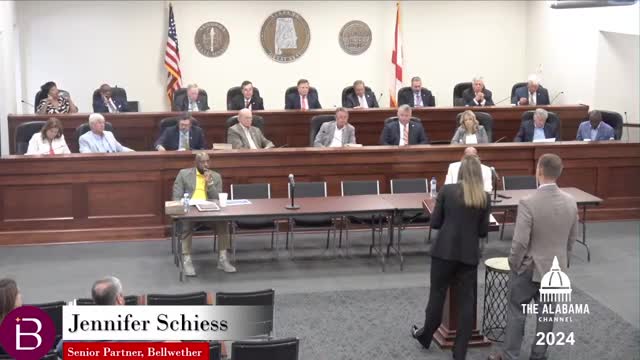Funding Gaps Exposed for English Learners in Alabama
August 16, 2024 | Joint Interim Committees, Alabama Legislative Sessions, Alabama
This article was created by AI summarizing key points discussed. AI makes mistakes, so for full details and context, please refer to the video of the full meeting. Please report any errors so we can fix them. Report an error »

In a recent government meeting, discussions centered on the pressing need for enhanced funding mechanisms to support English learners and rural school districts in Alabama. The meeting highlighted the challenges faced by English learners, a rapidly growing segment of the student population, who often require additional resources beyond the standard funding allocations. Currently, Alabama allocates approximately $16.2 million through a categorical grant for English learner services, but experts argue that this amount is insufficient to meet the diverse needs of these students.
Participants noted that many states have adopted weighted funding systems that account for varying levels of need among English learners. For instance, states like Tennessee and Texas utilize a tiered approach, assigning different weights based on the number of years a student has been designated as an English learner. This method aims to provide more support to students in their initial year of English learner services, who typically require more intensive assistance compared to those who have been in the program longer.
The meeting also addressed the unique challenges faced by rural school districts in Alabama, which often struggle with teacher recruitment and retention due to their geographic isolation. Research indicates that new teachers are likely to remain in or return to areas close to their training institutions, making it difficult for rural districts to attract qualified educators. To mitigate these challenges, the discussion proposed implementing a weighted funding formula that considers the sparsity of student populations in rural areas. Suggestions included a flat weight for districts with low student density or a sliding scale that increases funding based on the degree of sparsity.
Currently, Alabama does not have a system in place to address the needs of rural districts in its funding model, unlike some neighboring states that provide additional weights for such communities. The meeting underscored the urgency of revising funding strategies to ensure that both English learners and rural districts receive the necessary support to foster educational equity and improve outcomes for all students.
Participants noted that many states have adopted weighted funding systems that account for varying levels of need among English learners. For instance, states like Tennessee and Texas utilize a tiered approach, assigning different weights based on the number of years a student has been designated as an English learner. This method aims to provide more support to students in their initial year of English learner services, who typically require more intensive assistance compared to those who have been in the program longer.
The meeting also addressed the unique challenges faced by rural school districts in Alabama, which often struggle with teacher recruitment and retention due to their geographic isolation. Research indicates that new teachers are likely to remain in or return to areas close to their training institutions, making it difficult for rural districts to attract qualified educators. To mitigate these challenges, the discussion proposed implementing a weighted funding formula that considers the sparsity of student populations in rural areas. Suggestions included a flat weight for districts with low student density or a sliding scale that increases funding based on the degree of sparsity.
Currently, Alabama does not have a system in place to address the needs of rural districts in its funding model, unlike some neighboring states that provide additional weights for such communities. The meeting underscored the urgency of revising funding strategies to ensure that both English learners and rural districts receive the necessary support to foster educational equity and improve outcomes for all students.
View full meeting
This article is based on a recent meeting—watch the full video and explore the complete transcript for deeper insights into the discussion.
View full meeting
